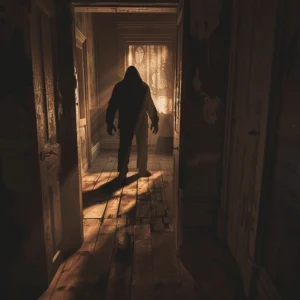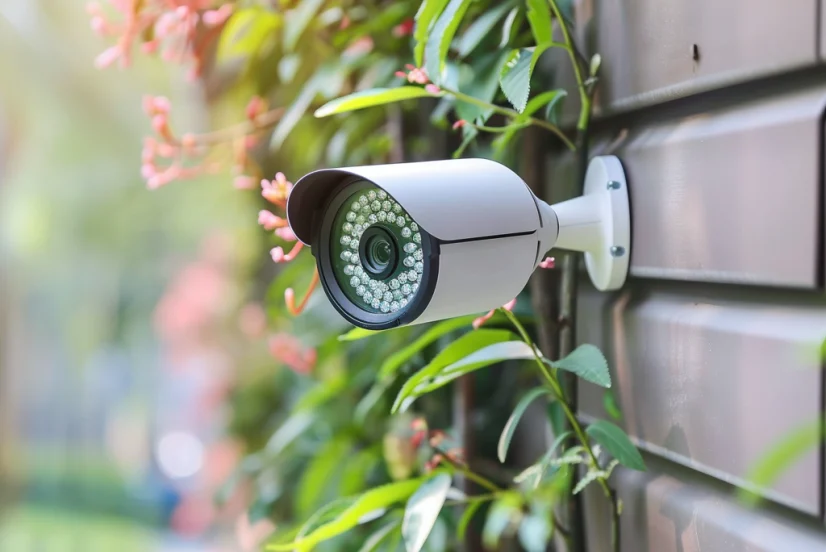How to Choose the Right Outdoor Security Cameras
In today’s world security is key and when it comes to an outdoor security camera system it’s no exception. As a homeowner the safety of my property and loved ones is at the top of my list and choosing the right outdoor security cameras has been key to keeping my family and me safe. With so many options it can feel overwhelming. But with the right info and knowledge choosing the perfect outdoor security camera system is a breeze. Follow along as I share my experience and the things to consider when choosing an outdoor security camera system so you can make an informed decision and protect your home.
Why Outdoor Security Cameras Matter?

Outdoor security cameras are the first line of defense against intruders and provide valuable footage in the event of a break in or vandalism. Just having them visible will deter would be criminals from targeting your property. These cameras give homeowners peace of mind, so they can monitor their property remotely and respond to any suspicious activity. Last summer my neighborhood had a string of break ins and everyone was on high alert. One night I heard a strange noises outside my house and checked the feed from my new outdoor security camera. The camera caught a suspicious person on my property and I was able to share the footage with the authorities. Do what you can now to protect your home from future invaders.
Your Security Requirements
Before you invest in an outdoor security camera system you need to assess your specific security needs and goals. Consider the size and layout of your property, vulnerable areas and your surveillance objectives. Are you just monitoring the front door, driveway, backyard or all of the above? By doing a security needs assessment you can determine how many cameras you need and where to put them for full coverage.
Types of Outdoor Security Cameras

Outdoor security cameras come in many forms each with their own features and benefits to suit different surveillance needs. Here are the common types of outdoor cameras:
-
Dome Cameras: Dome cameras are discreet and vandal resistant, perfect for outdoor use. They have a wide field of view and often come with infrared night vision for 24/7 surveillance.
-
Bullet Cameras: Bullet cameras are sleek and visible deterrents, designed to withstand harsh weather conditions. They are versatile and can be mounted on walls or ceilings, long range visibility and powerful infrared night vision.
-
PTZ (Pan-Tilt-Zoom) Cameras: PTZ cameras have remote controlled pan, tilt and zoom functionality, users can adjust the camera’s viewing angle and zoom in on specific areas of interest. They are ideal for large outdoor spaces that require flexible surveillance coverage.
When choosing the type of outdoor camera for you consider visibility, durability and features like pan, tilt and zoom.
Outdoor Use Considerations

Outdoor security cameras are exposed to harsh weather conditions from extreme heat to freezing temperatures and everything in between. So durability and weather resistance is key when choosing an outdoor camera system. Look for cameras with high Ingress Protection (IP) ratings which means resistance to dust and water ingress. Also choose cameras made from durable materials like aluminum or polycarbonate that can withstand the outdoors.
Resolution and Image Quality
The resolution of a security camera determines the clarity and detail of the footage, which is important for identifying people or objects in the surveillance footage. Higher resolution cameras produce sharper images with more detail, so you can see facial features or license plate numbers. Here are the common resolutions for outdoor security cameras:
-
720p (HD): Basic HD resolution for general surveillance.
-
1080p (Full HD): Enhanced HD resolution for sharper images and more detail.
-
4K Ultra HD: Ultra high definition for forensic analysis.
When choosing the resolution of your outdoor cameras consider the camera placement, field of view and budget. Higher resolution cameras produce better image quality but require more storage space and bandwidth for recording and streaming.
Night Vision Outdoor Camera Capabilities

Surveillance doesn’t stop when the sun goes down. Outdoor security cameras with night vision technology allows 24/7 surveillance, captures clear images even in low light or pitch black conditions. Here are the common types of night vision technology used in outdoor cameras:
-
Infrared (IR) Night Vision: Infrared LEDs illuminate the camera’s field of view with invisible infrared light, captures black and white images in complete darkness.
-
Color Night Vision: Some outdoor cameras have color night vision, captures full color images in low light conditions. Color night vision is better than traditional black and white night vision.
When choosing outdoor cameras with night vision make sure the camera’s infrared range covers the area you want to monitor. Also consider the ambient lighting and presence of reflective surfaces that may affect night vision performance.
Wired vs. Wireless Outdoor Camera Systems

Outdoor security camera systems are available in wired and wireless configurations, each with its own pros and cons. Knowing the difference between wired and wireless will help you choose the right one for you.
-
Wired Systems: Wired outdoor camera systems require a physical connection to a power source and recording devices, provides a reliable and continuous power supply for 24/7 operation. Installation may be more laborious but wired systems are more reliable and secure since they are not prone to wireless interference or signal loss.
-
Wireless Systems: Wireless outdoor camera systems eliminates the need for cumbersome wiring and provides more flexibility in camera placement. With Wi-Fi connectivity, wireless cameras can be easily installed and repositioned as needed, perfect for rental properties or temporary surveillance needs. But wireless systems are prone to signal interference and range limitations, especially in areas with dense wireless networks or obstacles.
When choosing between wired and wireless outdoor camera systems consider reliability, installation complexity and the availability of power source and network connectivity at the camera locations.
Storage Options

The ability to store and retrieve recorded footage is important for reviewing past events and identifying potential security threats. Outdoor security camera systems offers various storage options, each with its own pros and cons.
-
Cloud Storage: Cloud storage allows footage to be stored and accessed via the internet, provides convenient remote access and automated backups. Cloud storage is subscription based, with storage capacity tailored to your needs.
-
Local Storage: Some outdoor cameras has onboard storage options like SD cards, allows footage to be stored locally without the need for external recording devices. Local storage is cost effective and self contained solution, perfect for areas where internet connectivity is unreliable or unavailable.
-
Dedicated DVR/NVR Systems: Dedicated Digital Video Recorder (DVR) or Network Video Recorder (NVR) systems provides centralized storage and advanced features like motion detection, scheduling and remote access. These systems offers scalable storage solutions that can support multiple cameras and long recording periods.
When choosing a storage for your outdoor camera system consider storage capacity, retention period and data security requirements. Also make sure it’s compatible with your chosen camera models and recording devices for smooth integration and operation.
Remote Viewing and Accessibility

Remote access to camera feeds and footage is important for monitoring your property and responding to security incidents. Outdoor camera systems should have seamless remote access via mobile apps or web interfaces to view live camera feeds and recorded footage anywhere you have an internet connection.
FAQs:
-
How many cameras do I need for my home?
-
The number of cameras depends on the size of your property, areas to be monitored and specific security concerns. Conduct a thorough assessment of your home’s security needs to determine the right number of cameras.
-
-
Can I install security cameras myself or do I need professional help?
-
While DIY installation is possible for most security camera systems, professional help may be needed for complex setups or if you’re unsure about technical aspects. Consider your level of expertise and the complexity of the installation process when deciding.
-
-
What is the difference between DVR and NVR systems?
-
DVR (Digital Video Recorder) systems process and store video footage locally using analog cameras, NVR (Network Video Recorder) systems use IP cameras and store footage on a networked storage device. Each has its own advantages and compatibility requirements.
-
-
Are there any privacy concerns with security camera systems?
-
Privacy concerns may arise especially with cameras placed in sensitive areas or facing neighboring properties. Be mindful of privacy laws and regulations and consider using privacy masking to protect individuals’ privacy.
-
-
Can I use security cameras for purposes other than surveillance?
-
Yes, security cameras can be used for multiple purposes beyond surveillance, such as monitoring pets, checking on elderly family members or keeping an eye on deliveries. Modern security camera systems are versatile and can be used for various applications beyond security.
-


